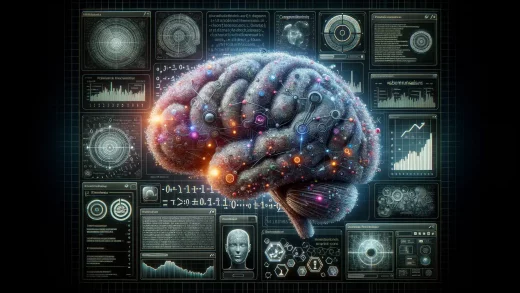Understanding the Role of AI in Mobile Apps
Why AI Is Transforming Mobile Apps
Imagine your mobile app as a puzzle with one missing piece. That piece? It’s AI. Artificial Intelligence isn’t just another tech trend—it’s like giving your app a brain that can think, learn, and adapt. Ever wondered how apps like Spotify magically know what music you’ll love next? Or how Instagram serves you eerily spot-on ads? Yep, that’s the power of AI in action.
Here’s what it brings to the table:
- Personalization: AI helps tailor experiences for every user, from suggesting content to adjusting features based on behavior.
- Smarter Interactions: With natural language processing (NLP), users can talk, type, or gesture—and your app will actually “get” them.
- Predictive Insights: AI identifies trends and patterns, so your app stays one step ahead of user needs.
The Invisible Hand Behind Seamless Experiences
Think of an AI-powered mobile app as your personal assistant on steroids. It works tirelessly behind the scenes, analyzing data faster than a caffeine-fueled detective. For example, a fitness app can monitor your workout habits and suggest optimal times for exercise, while a travel app can predict flight delays before you’ve even packed.
With AI, apps evolve from static tools into dynamic companions, anticipating needs rather than simply reacting. And honestly? That’s the kind of game-changer no business can afford to ignore.
Steps to Integrate AI into Your Mobile App

Start with a Clear Vision
When it comes to weaving AI into your mobile app, the first and most vital ingredient is a crystal-clear vision. Ask yourself: what problem am I solving? Whether it’s personalizing user experiences, automating boring tasks, or driving smarter recommendations like Netflix does, you need an end goal that’s as sharp as a laser.
Once that’s pinned down, it’s time to pick the right type of AI. Will it be **machine learning**, **natural language processing**, or cutting-edge **computer vision**? Think of AI as a toolbox — not every project needs the same hammer.
The Hands-On Process
It’s time to get practical. Here’s how you turn your AI dreams into a living, breathing app:
- Choose the right API or platform: OpenAI or Google ML Kit can be game-changers. Pick one based on budget and goals.
- Leverage data: Feed your AI with quality data. If your app is a foodie hub, train it with recipes, cuisines, and food trends.
- Test and adapt: AI isn’t perfect out of the box. Tweak its performance just like you’d perfect a favorite recipe — trial, error, repeat.
Remember: this isn’t plug-and-play magic. It’s about experimentation, persistence, and a touch of patience. Don’t rush the process; your users will thank you.
Key Benefits of AI in Mobile Applications

Why AI Makes Mobile Apps Smarter (and Your Life Easier)
Picture this: a mobile app that feels like your personal assistant, understanding your needs before you even express them. That’s the magic of integrating AI. It doesn’t just crunch numbers—it transforms your everyday experience.
For starters, AI takes personalization to an entirely new level. Think about Spotify predicting your next favorite song or Netflix curating shows tailored to your vibe. With AI, your app isn’t just a tool; it’s a mind-reader.
Add to that the power of real-time adaptability. Using technologies like computer vision or natural language processing, apps can recognize faces, track fitness goals, or even translate languages on the fly. This isn’t tech—we’re talking about futuristic capabilities *right in the palm of your hand*.
- Smarter recommendations: Shopping apps suggesting items based on your style and past purchases.
- Seamless automation: Smart home apps adjusting lights or thermostats without a second thought.
- Instant problem-solving: Chatbots providing answers without you waiting in endless customer support queues.
Here’s the kicker: these benefits don’t just save time—they make apps feel intuitive and human. The line between “app” and “partner” is beginning to blur. And trust me, once you’ve experienced it, there’s no going back.
From Insights to Action: How AI Empowers Mobile Apps
Ever wonder how food delivery apps estimate arrival times *so perfectly*? Or why some fitness apps know exactly when you’re slacking? It’s all thanks to AI’s ability to turn raw data into actionable insights.
When your app taps into machine learning, it becomes a decision-making powerhouse. AI identifies patterns and learns from user behavior, enabling features you didn’t realize you needed. A ride-share app using predictive algorithms might recommend alternate routes during rush hour. Pretty genius, right?
And let’s not forget the joy of hyper-efficiency. Instead of bombarding users with endless notifications or irrelevant content, your app can filter out the noise. AI ensures every interaction adds value—helping users fall in love with your platform.
Challenges and Considerations in AI Integration

Unexpected Hurdles in AI Implementation
Integrating AI into your mobile app strategy might feel like harnessing the power of a rocket. But let’s be real: even rockets occasionally misfire. One key challenge is the *data*. AI thrives on it, but if your app lacks clean, well-structured datasets, you’re essentially asking it to navigate in the dark. And no, tossing random data at it won’t work—it’s like fueling a car with soda.
Then, there’s the complexity of training the AI. Do you build in-house expertise or rely on third-party solutions? The decision isn’t just technical; it’s strategic. The wrong choice could drain your budget faster than you can say “machine learning algorithm.”
- User Experience: Integrating AI should enhance the experience, not overwhelm users with clunky features.
- Scalability: Will the AI grow with your app, or buckle under increased demand?
- Transparency: Users expect to know how AI impacts their data—building trust isn’t optional.
Cost vs. Reality: The Balancing Act
Let’s talk money. Custom AI development can burn through a startup’s budget like dry tinder. Off-the-shelf APIs may seem like a shortcut, but beware: they might lack the flexibility your app needs. And don’t forget ongoing costs—maintaining and optimizing AI is a marathon, not a sprint.
Finally, ethics loom large. Imagine your app’s AI making decisions—do you trust it to avoid bias or discrimination? These aren’t hypothetical concerns. They’re real-world stakes for your brand’s reputation. Always keep a watchful eye on your AI’s behavior.
Future Trends in AI for Mobile App Development

The Rise of Hyper-Personalized AI Experiences
Picture this: your app knows your users so well it feels like their best friend. That’s the magic of hyper-personalization, one of the most exciting future trends in AI for mobile apps! Thanks to advanced AI algorithms and machine learning, apps are now capable of tailoring every interaction to individual user preferences. Think Netflix suggesting not just what you *might* like, but what you didn’t even know you needed.
Tomorrow’s mobile apps will take this to the next level. Imagine a fitness app that dynamically adjusts meal plans based on changing habits or a meditation app that adapts its tone to suit your emotional state. These apps will evolve with users, becoming less “one size fits all” and more “just for you.”
This isn’t just cool—it’s transformative. Hyper-personalization turns casual users into loyal advocates, fostering deeper engagement at every tap.
The Symbiosis of AI and Augmented Reality (AR)
The line between digital and reality? Blurring faster than ever, thanks to the marriage of AI and AR. Future apps will let users interact with the world in ways we could only dream of.
Some examples waiting in the wings:
- Real-time translation apps using AI to visually convert foreign signs into your native language through AR lenses.
- Fashion apps allowing users to “try on” outfits digitally, with AI analyzing fit, style, and even shopping deals.
This combo isn’t just sci-fi fantasies come to life—it’s the next great leap in user experience. For developers, the challenge is clear: embrace these technologies now, or risk falling behind as the future zooms past.



